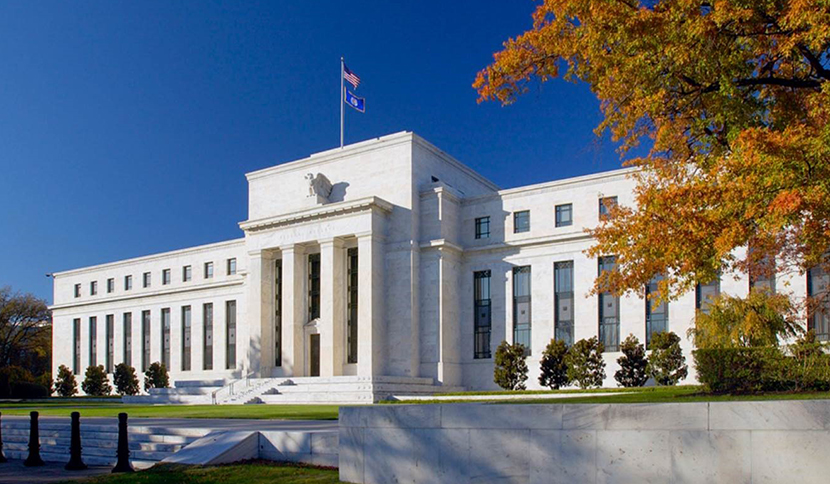
Fed: No Rate Hike Until ‘at Least 2022’

Enjoying that zero-percent federal funds rate? It’s probably going to be around for a long time.
The Federal Open Market Committee yesterday offered cautious hope for an economic turnaround following the body-slam brought on by the coronavirus pandemic. But it soberly noted the economic recovery could take some time.
“The coronavirus outbreak is causing tremendous human and economic hardship across the United States and around the world, the FOMC said yesterday (https://www.federalreserve.gov/newsevents/pressreleases/monetary20200610a.htm) following its regularly scheduled two-day policy meeting. “The virus and the measures taken to protect public health have induced sharp declines in economic activity and a surge in job losses. Weaker demand and significantly lower oil prices are holding down consumer price inflation. Financial conditions have improved, in part reflecting policy measures to support the economy and the flow of credit to U.S. households and businesses.”
Mortgage Bankers Association Chief Economist Mike Fratantoni noted, as in the past, unemployment and jobs will be the primary factor determining current and future policy.
“The employment report for May showed a sharp turnaround from the stunningly-large job losses in April,” Fratantoni said. “However, employment remains 13% below where the labor market was in February. [Yesterday’s] announcement from the Federal Reserve is aligned with this reading of the economy: we might be getting better – but we are still far away from full employment – with risks ahead from a second wave of the pandemic and huge economic uncertainties. Monetary policymakers will therefore keep rates low for years to ensure a full recovery.”
Fratantoni said to help convince markets that they will keep rates at zero, even if the job market continues to improve, the Fed also reaffirmed its strong commitment to keep rates low until full employment returns. “Matching MBA’s forecast, the FOMC’s projections suggest this means keeping rates at zero until at least 2022,” he said.
The Fed continues to take steps to shore up the economy, Fratantoni noted. “In March, the Fed stepped in to purchase billions of mortgage-backed securities and Treasuries, and has cumulatively purchased more than $2 trillion since then, including more than $700 billion of MBS,” he said. “While these purchases have slowed, the Fed continues to signal that they stand ready to step back into the market, if necessary, to reduce volatility. Today, they pledged to maintain their purchases at the current pace. With mortgage rates near record-lows, this support has enabled a robust rebound in purchase market activity and a sustained refinance wave – which is saving homeowners money that can be used to support other spending, thereby benefitting the broader economy.”
“The committee left little doubt that it is prepared to do whatever it can to help return the U.S. economy to some semblance of ‘normal,’” said Jay Bryson, Chief Economist with Wells Fargo Securities, Charlotte, N.C.
The full FOMC statement appears below:
“The Federal Reserve is committed to using its full range of tools to support the U.S. economy in this challenging time, thereby promoting its maximum employment and price stability goals.
“The coronavirus outbreak is causing tremendous human and economic hardship across the United States and around the world. The virus and the measures taken to protect public health have induced sharp declines in economic activity and a surge in job losses. Weaker demand and significantly lower oil prices are holding down consumer price inflation. Financial conditions have improved, in part reflecting policy measures to support the economy and the flow of credit to U.S. households and businesses.
“The ongoing public health crisis will weigh heavily on economic activity, employment, and inflation in the near term, and poses considerable risks to the economic outlook over the medium term. In light of these developments, the Committee decided to maintain the target range for the federal funds rate at 0 to 1/4 percent. The Committee expects to maintain this target range until it is confident that the economy has weathered recent events and is on track to achieve its maximum employment and price stability goals.
“The Committee will continue to monitor the implications of incoming information for the economic outlook, including information related to public health, as well as global developments and muted inflation pressures, and will use its tools and act as appropriate to support the economy. In determining the timing and size of future adjustments to the stance of monetary policy, the Committee will assess realized and expected economic conditions relative to its maximum employment objective and its symmetric 2 percent inflation objective. This assessment will take into account a wide range of information, including measures of labor market conditions, indicators of inflation pressures and inflation expectations, and readings on financial and international developments.
“To support the flow of credit to households and businesses, over coming months the Federal Reserve will increase its holdings of Treasury securities and agency residential and commercial mortgage-backed securities at least at the current pace to sustain smooth market functioning, thereby fostering effective transmission of monetary policy to broader financial conditions. In addition, the Open Market Desk will continue to offer large-scale overnight and term repurchase agreement operations. The Committee will closely monitor developments and is prepared to adjust its plans as appropriate.
“Voting for the monetary policy action were Jerome H. Powell, Chair; John C. Williams, Vice Chair; Michelle W. Bowman; Lael Brainard; Richard H. Clarida; Patrick Harker; Robert S. Kaplan; Neel Kashkari; Loretta J. Mester; and Randal K. Quarles.”
